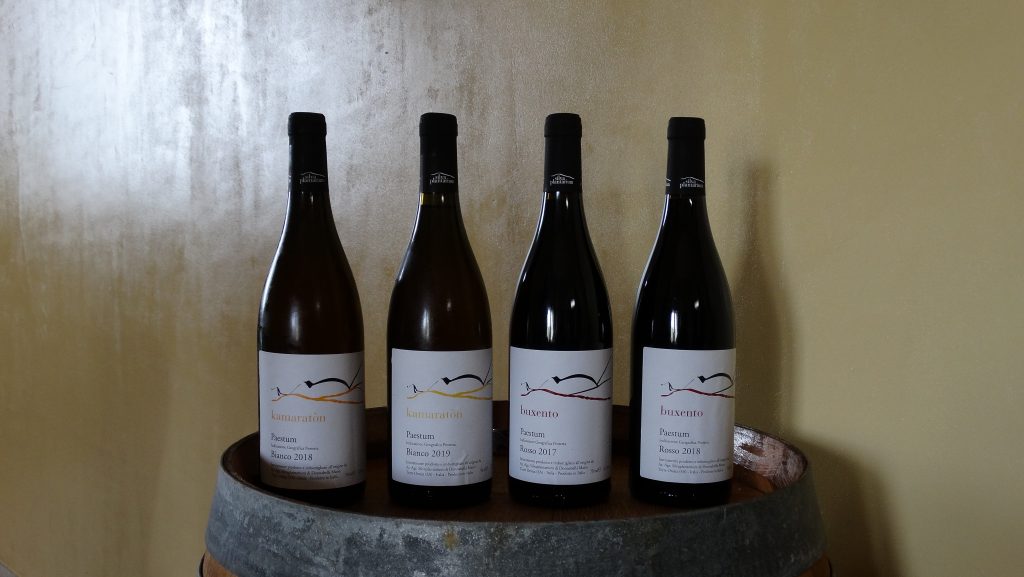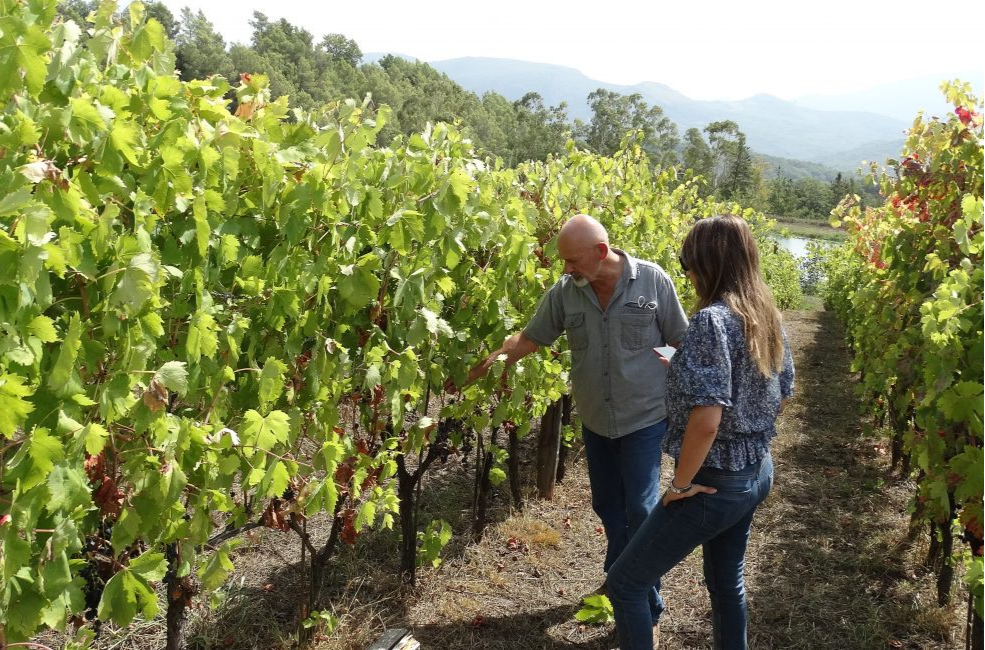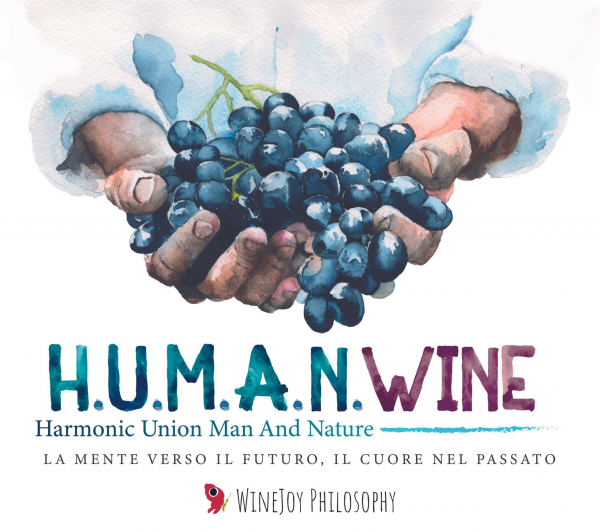Mario Donnabella: a life to discover the secrets of the soil.
At each hairpin bend, nature offers me in its best guise: a cobalt-colored mirror of the sea that enjoys changing in shades of blue, and then become green as the hills that look in the mirror of the Gulf of Policastro.
Already the hills… They meet me wrapping me in the green of the spotted vegetation here and there from the brown of the heat of a warm morning of late summer.
I have an appointment with Mario Donnabella, the natural wines grower, whom one of his fellow countrymen and fellow winegrowers told me about.
The words used to describe him intrigued me, as going down by the hill I feel that it will not be a banal interview, obvious, a visit to a winery like many others.
I arrive at 11 o’clock in the morning with a sky with a pale sun that makes room in the clouds.
Mario, a tall man, with a lean body, an elegant face and an intellectual goatee of the Risorgimento, has nothing of the imagination of the peasant already in his appearance.
He welcomes me at the entrance of his estate, beginning to tell me about his life, without even waiting for my questions, because to understand the present we must start from the past…
He tells me about his studies at the Agricultural Institute of Salerno, his return home to the family farm, his clashes with his father who cultivates vineyards, olive trees like his ancestors and that ‘if I sent a son to study does not mean that he can do what he wants in the country’, and then what idea to make the nursery of wooded trees…
The will and the stubbornness of the youth lead him to the realization of his first dream, a small nursery that Mario carries on for several years, which becomes increasingly large and profitable.
But when life makes its first turning point and we realize that we are more and more like our parents, we feel a need never felt in the whirlwind of youth: a return to the roots.
And to Mario roots are in those abandoned lands since his father, because of the passing of the years, could no longer care for his vineyards, which have been lost.
Since that day his goal has been to restore the old vineyard and the ancient vines.
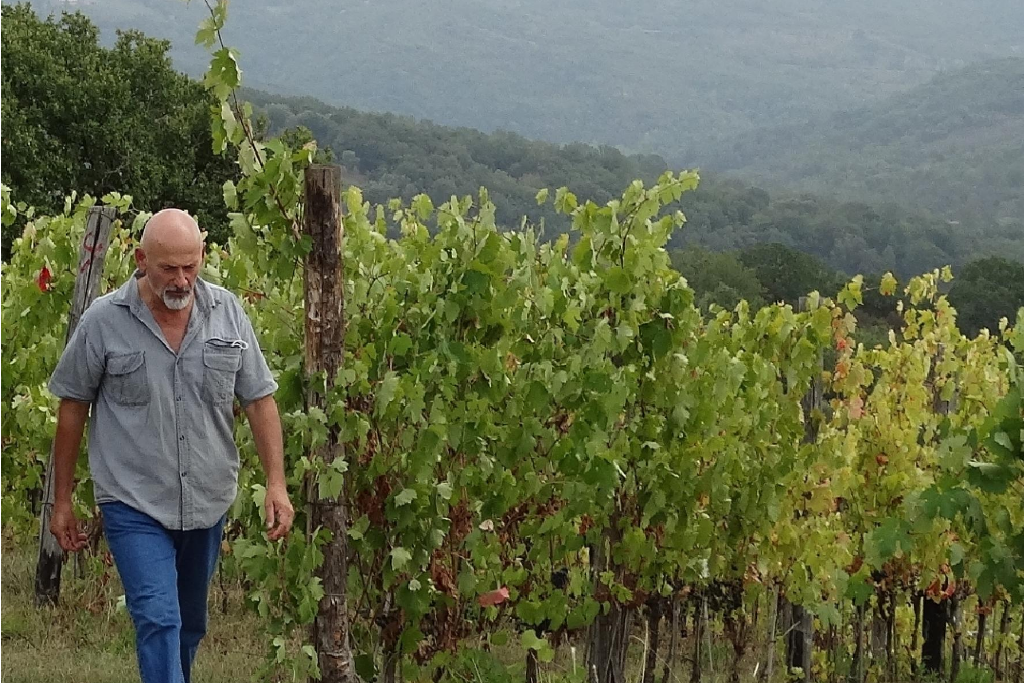
The route through the vineyards: vines found again, a return to the roots
He proudly shows me the vineyards that surround the nursery, almost to protect it, as a father caresses his son found.
Mario tells me about his wandering among the farmers of the area who had preserved the old vines for tradition, without knowing to be guardians of varieties now in extinction.
Mario brings back in production the Aglianicone, a grape that, he explains, produces a wine softer than Aglianico, with a thick skin, with abundant tannins, but not green, therefore less astringent in the mouth than traditional Aglianico.
Then he takes me to the vineyards of Santa Sofia, the other flagship of his new varieties, which produces a white, astringent flavor, which he uses in blends with Fiano, 50%, to make it softer.
While walking he shows me a third vine, the Mangiaguerra, a red berry, to which he cares a lot, which he cannot vinify, as it is not entered in the register of varieties. I ask him why he cares so much about this vine and he explains to me that it is a historical variety he has found, now lost, that he has vinified it and states that he has obtained a red very appreciated by various tasters.
It is a wine less tannic than Aglianicone, certainly not a Sangiovese or a Merlot, but with its tannic texture, structured like all the wines of the area.
Our journey through the vineyards leads me to the area where he cultivates Fiano and to a less extensive part cultivated in Aglianico.
The location… the land where the vine grows and feeds, making sure that the same grape variety gives wines with a different flavor, because Aglianicone or Fiano or Santa Sofia, Mario continues, can be cultivated everywhere, but it is the soil with its tipicity to make different wines.
The land of his wines, he tells me, is mainly sandstone, a clay soil mixed with sandstone.
He explains he has a system of cultivating that goes upwards, at Alberello with spur pruning, but not spur cordon.
We are in the vineyard of Aglianicone, of which 3 clones were found, he has the least productive of the three, but, he says convinced, to the benefit of the final product. The Aglianicone has a very sparse cluster with acing, which can reach maturity without giving problems.
He tells me that Aglianicone produces a very structured wine, which reaches 15 degrees… maybe a little too structured, I think…
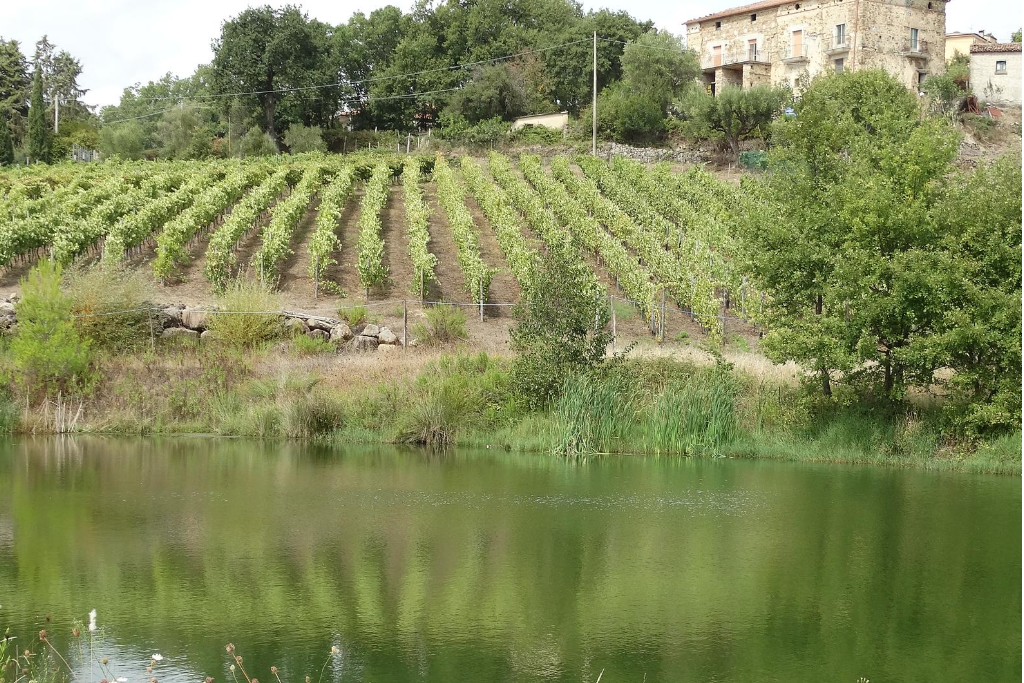
Grape tasting
Let’s pass to the tasting of the grape from which the evaluation of technological ripeness and phenolic ripeness is obtained.
We have the tasting following the various stages ranging from the intake of juice, which gives us the degree of technological maturation with the percentage of sugars and acids, to the retention in the mouth of the pips, which are examined to ensure that they are hazelnut-coloured and hard for the right ripeness, finally chewing the peel to evaluate phenolic ripeness.
He makes me notice that Aglianicone, in particular, has a thick skin, which produces an abundant tannin, but not green, which gives softness to the wine.
Mario points out to me that this year, due to the drought, the phenolic ripeness, that is the skin, is a bit late compared to the technological ripening: it hasn’t rained for more than four months, but there are still about ten days to the harvest and, looking at the sky hopefully, a few millimeters of water would be enough for the phenolic ripening.
Mario, looking gratefully at the ground, shows me the roots of the vine, which fortunately know how to fish in the depths of the earth to take the water that the sky does not give.
Let’s taste the grapes of Santa Sofia, the white grape variety.
I immediately notice the difference: its cluster is large, it confirms me that it is very productive
This vine is also grown as a sapling, not a Guyot. By tasting I understand that the ripening is much more advanced, because the skin is easily chewed. Mario tells me that for his production of natural wines is also important phenolic ripeness, as he also uses the skins and pips, making the wine macerate, instead in the traditional processing of whites are immediately eliminated pips and skins.
Santa Sofia has the characteristic of being astringent, therefore it leaves little with the skin, not being able to wait too long for aging, as it would lose in acidity. This year’s wine will have a higher percentage of Fiano due to drought.
We go to another area of the estate, where the soil changes, becoming clayey and sandy with skeleton. The soil, very warm, gives a particular connotation to red wines, enriching them with tannins and anthocyanins.
He tells me that he is about to make a zoning, we stop in another vineyard of Aglianicone, where we do another grape tasting.
I point out that I feel a less invasive sensation than the other vineyard, the soil has changed a bit, the exposure to make this berry already different. Mario tells me that it is a question of maturation, that this is more advanced.
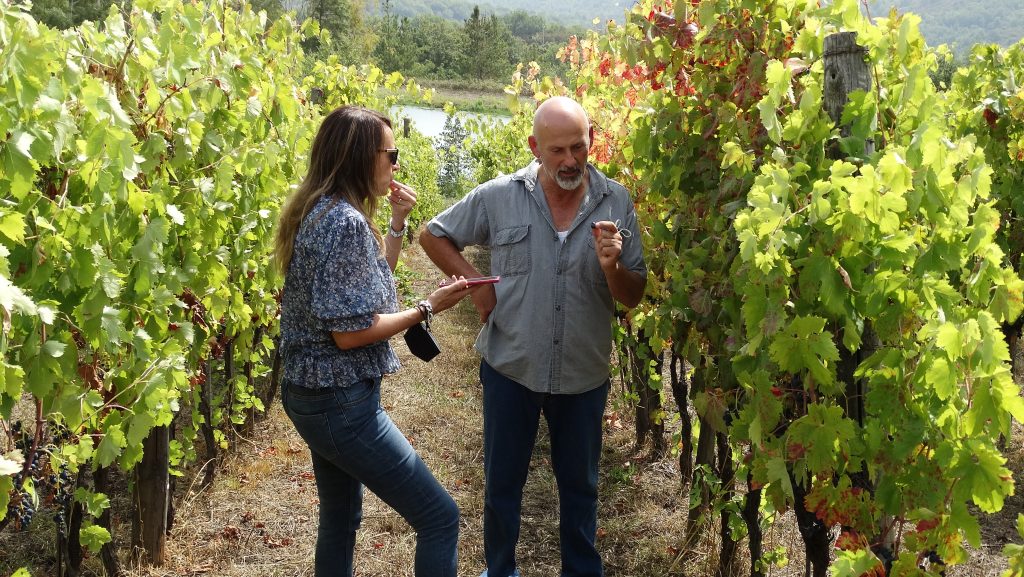
The interventions in the vineyard
After the tastings in the vineyard Mario explains to me the interventions he makes in order to cultivate the vineyard in the most natural way possible.
From the experience over the years he has noticed that the management of interventions in the vineyard comes from the methods of rootstock.
He explains that nitrogen, so important for plant growth, develops thanks to the activity of the bacteria that are in the soil, provided that the soil is not disturbed by processing. Mario declines me the sense he gives to the definition of natural agriculture: let the land work, limiting human intervention to the maximum.
Mario declines me the sense he gives to the definition of natural agriculture: let the land work, limiting human intervention to the maximum.
He explains to me with a more serious face that in his vineyards there is no intervention on his part except for a simple mowing of the grass after the phase of veraison.
It does not even make green manure, which are usually used to refer the soil.
His intervention is limited to mowing the grass with a light tractor, as if to make me understand that he does not want to hurt the soil.
Under the spinning he intervenes by hand, doing the green pruning and not making topping, thus leaving the crown intact.
This year, he continues, he did only two treatments with copper and three with sulfur (only when there was grapes on the plants), but regrets having used copper stating that he was misled by the climatic variability of the month of June and that, after a beautiful May in which he had not done any treatment, he was afraid for the flowering now close and, fearing to compromise a year of work, he used copper.
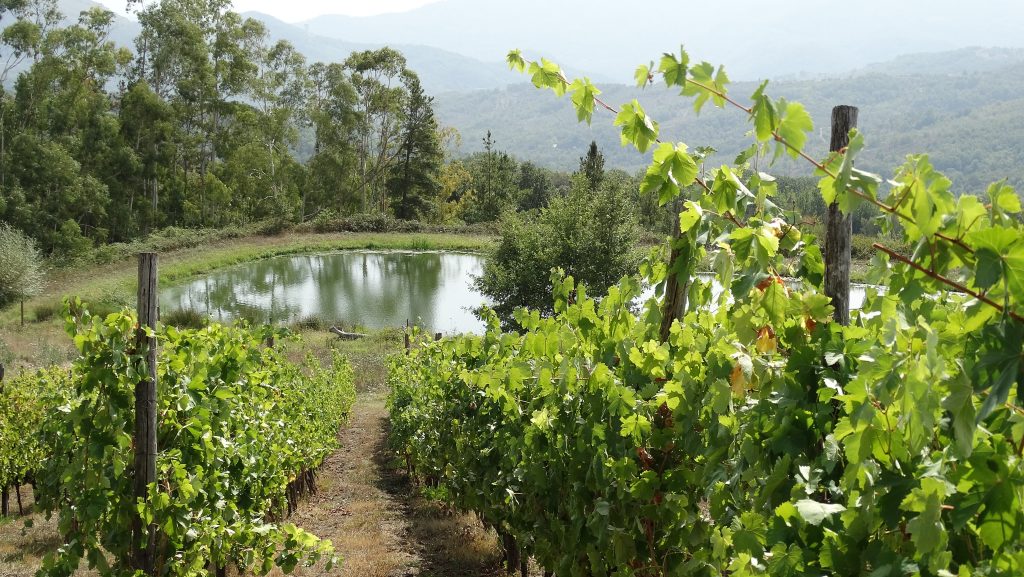
The diseases of the area
He illustrates the diseases to which the vineyards of this area are subject.
He tells me that there is a strong presence of oidium, as we are in the hills… there is ventilation and therefore dry grapes are easily attacked. He gives a little bit of sulfur after the fruit set, one in June and two in July, but unfortunately he found that oidium is present every year, compromising the quality of the grape.
The Downy mildew is different because it attacks the bunch, so you lose only the bunch attached, but the bunch not attached remains healthy. On the contrary, powdery mildew affects the berries of each bunch and is therefore more complex to eradicate.
He shows me with a face that lights up suddenly, like who made a great discovery, a plant, the Imula Viscosa, from which he is beginning to produce fermented, which apparently have antifungal properties also confirmed by a researcher from the University of Naples. He invites me to touch the leaves, which appear sticky and with a very intense aroma.
His hope is that the ferments of this plant can replace the treatments with sulfur and copper.
The nursery
He shows me his first passion, the Silva plantarium, the forest of plants that he has reproduced.
In a hectare of land he produces all the plants of the Mediterranean: strawberry tree, myrtle, oak, olive trees…
His cultivated forest meets with the natural forest, which could be deforested and used for his nursery, making steps, but, he states with pride, that he did not, because his philosophy, even as a nurser, does not change: not be invasive towards the earth.
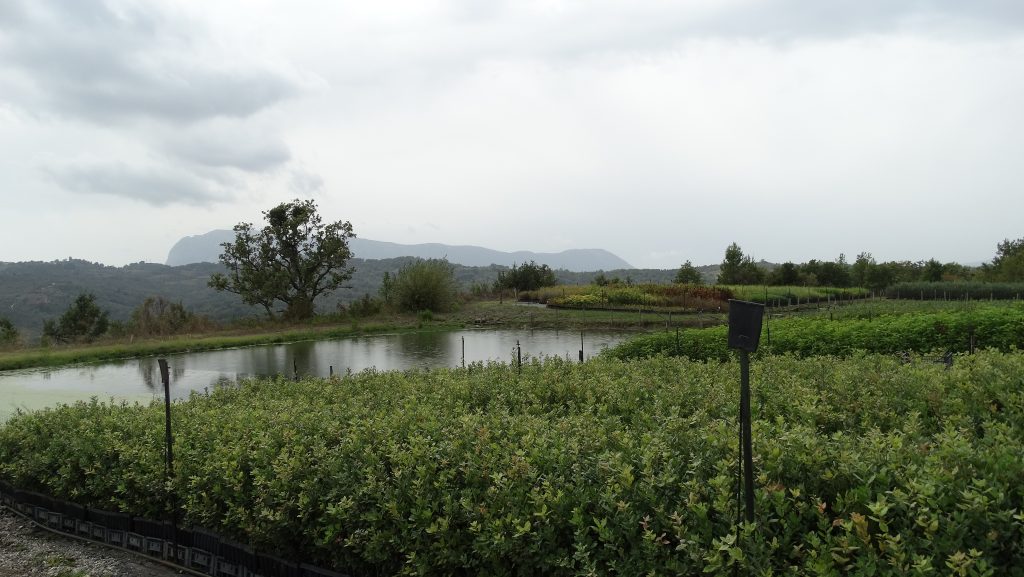
Fermented by Imula Viscosa
The fermented Imula Viscosa is used to make everything, on it Mario has placed many hopes and some certainty already experienced.
He shows me the fermented container of Imula Viscosa: as soon as Mario moves the lid, a strong olive scent spreads.
Mario explains the components of the fermented, telling me that, in addition to Imula Viscosa, he also puts a little nettle, explaining me that the result is practically like the vinegar of the past, that this fermented produces the bacterial colony of vinegar once. Fermented, which is technically called “Fervida”, uses a fermentation technique experienced in Thailand.
He explains the versatility of the product that, in small quantities, can be used for domestic use: in fact he uses it as vinegar, as a substitute for yogurt, being rich in lactic ferments.
Mario speaks in praise of the beneficial effects of vinegar once made at home, because it was full of lactic ferments, acetites useful for the intestine and that using this product, now about seven, eight years, he has reduced flu diseases, the sore throat, the pharyngitis, that he treats with the fermented of Imula Viscosa, to which he adds lemon, propolis, olive leaves.
He affirms with conviction that he uses the fermented also for rinsing his hands, as disinfectant instead of amucin, that this product is different from sterilizing preparations such as hydrogen peroxide or amucin that kill everything, leaving the skin defenseless and that therefore, if a virus comes, it has free field, because it has no antagonists, instead its product, as it is rich in bacteria and ferments that are alive, disinfects because of the very low ph, at the same time the epidermis shielded from these good microorganisms can be protected from the attack of bad microorganisms.
Mario confesses to me the sources of his life conduct, cultivation methods and his research: Masanobu Fukuoka for natural agriculture.
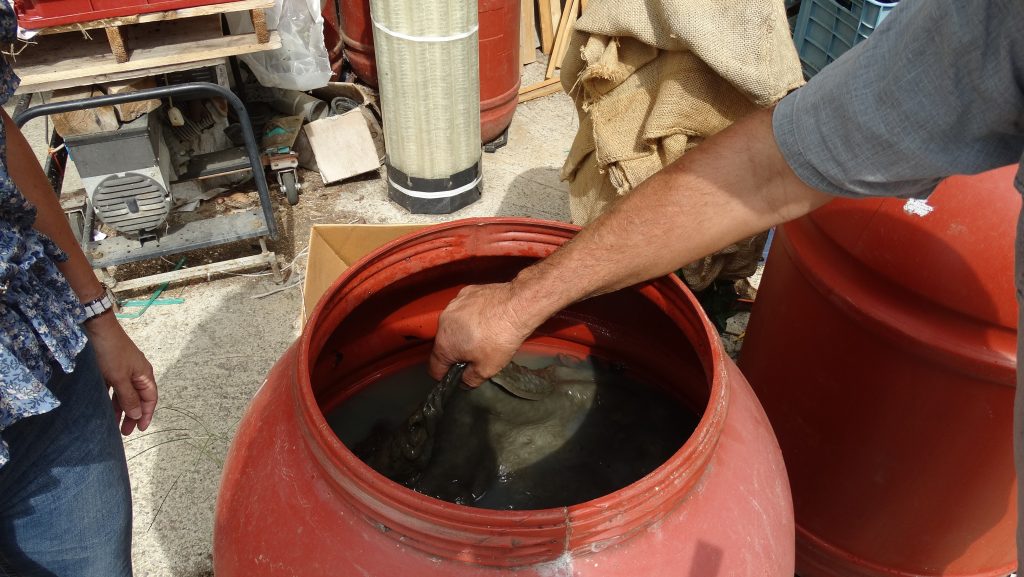
Visit to the winery: the journey into the world of Mario goes towards the conclusion
We finally enter the cellar, the temple where the bunch becomes wine.
Mario tells me that the building, used as a cellar, was once the hunting villa belonged to a noble family from Cilento, who owned a very large estate, which stretched from Caselle in Pittari to Marina di Camerota..
We go down to the cellar where I see steel silos.
Mario prevents my question, telling me that the steel silos are used to keep the temperature of fermentation low, that maybe someone, as soon as he sees the terms of natural wines and steel, could turn up his nose, that he is not very happy to use, but they are practical and take up less space and he has little space and then a minimum of modernity is needed, for example now he has in fermentation a little white wine, which holds at 20/21 degrees, because there are living beings like us there who can’t stand extreme temperatures.
So silos allow the ferments not to exceed the temperature of 26 degrees. In his opinion a minimum of control is necessary, if you do not want annoying final faults in the wine.
He explains to me that, after the fermentation, he does some racking and then the pre-bottling.
Mario’s face lights up when he tells me about the aging of the wine.
He explains me that 90% of the aging of its production takes place in terracotta jars and only a small fraction in cask, which he intends to abandon definitively, as soon as he can buy other jars because according to him terracotta is the ideal material for the aging of wine, but above all it is our material… for example these terracotta amphorae make them in Tuscany, while the woods are not Italian, the terracotta also has a lower energy cost, and the wine aged in amphora (for those who do not look for the typical scents of wood) is good, because it is neutral, so it does not change the wine, making us feel the taste of the soil that has nourished it.
It reminds me that the practice of refining wine in terracotta was already in use by the ancient Romans, who exported it to Georgia, where they preserved this ancient and healthy practice, while in Italy we switched to wooden barrels.
He greets me with a stretched out face as a student who has finished the exam, telling me that at the moment the Silva Plantarium produces a total of 2500/3000 bottles per year, they are not many, but he is happy, because it is in harmony with Mother Earth.
If natural production means letting nature work, trying to help it when it needs small corrections, then the production of Mario Donnabella’s wines can be defined as natural.
It is certainly an excellent demonstration that integration and human-nature collaboration is possible.
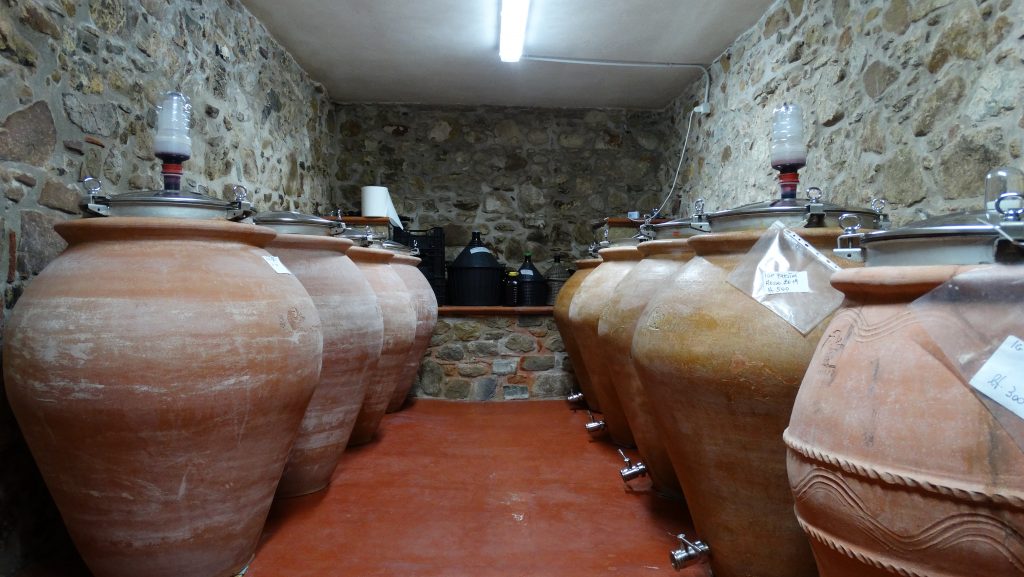
The wines tasted by us
Kamaraton 2018 and 2019 (Fiano and Santa Sofia grapes in blend)
Buxento 2017 and 2018 (Aglianicone)
